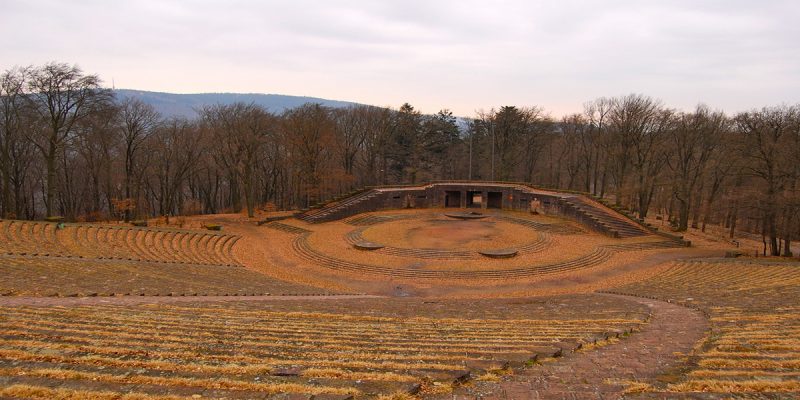Many public facilities built in Nazi Germany were areas of communal activity, embodying the core ideas on which the party was based on. In 1933 the Nazi Propaganda Ministry under Joseph Goebbels began a movement based on the “Blut und Boden” (Blood and Soil) ideology – the so-called “Thing” movement. A Thing was an ancient Nordic/Germanic gathering of the people, in an outdoor setting. The Thing sites were to be built as much as possible in a natural setting, incorporating rocks, trees, water bodies, ruins, and hills of some historical or mythical significance.
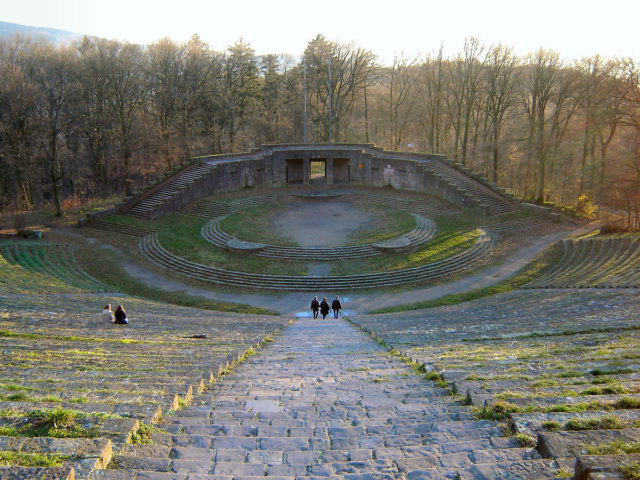
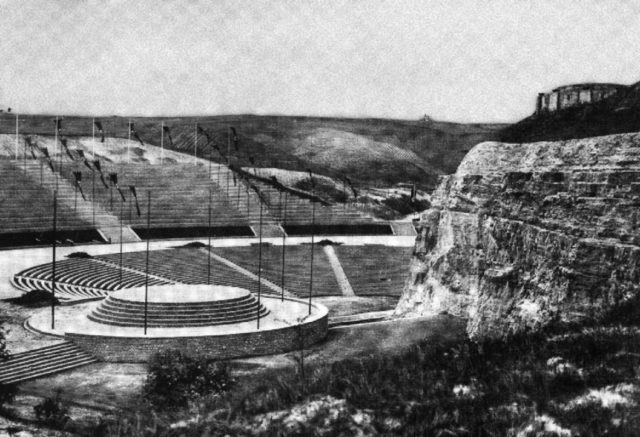
The Nazi Thing gatherings were to be held in specially-constructed outdoor amphitheaters, called (in the singular) Thingplatz or Thingstätte. The Heidelberg Thingstätte is an open-air theatre on the Heiligenberg in Heidelberg which was built during the Third Reich for performances and events as part of the Thingspiel movement.
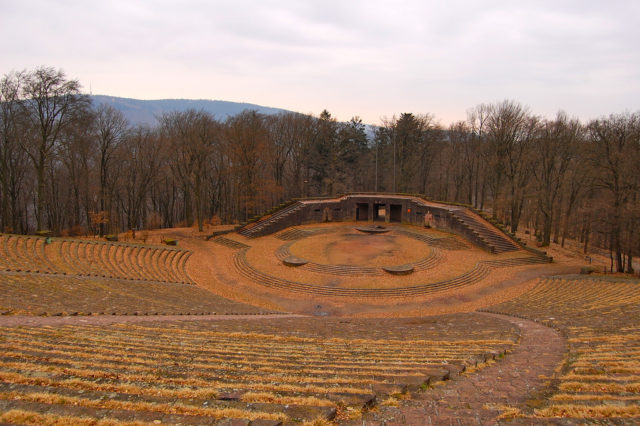
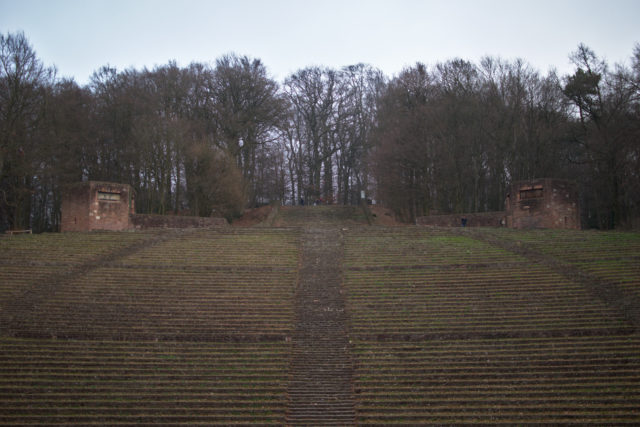
Thingstätten were modeled from ancient Greek theaters to strengthen the link to the past and Nazism, and to even legitimize the Nazi view of history. People would gather here for “Völkisch” meetings to see theater performances and propaganda presentations.
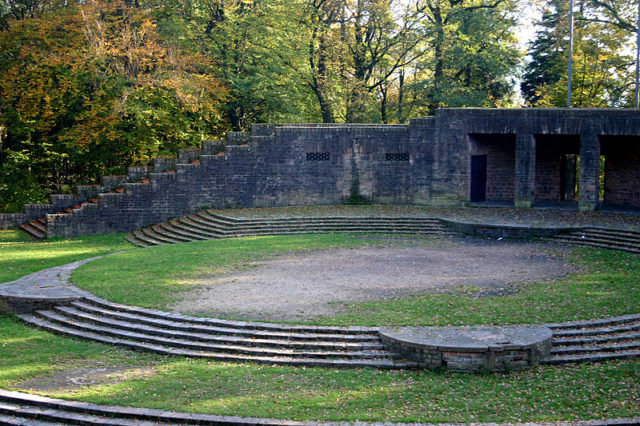
The architect was Hermann Alker, who worked for the Reichsarbeitsdienst (Reich Labor Service). Work began in late April 1934 and was to have been completed in July, but paused and resumed on the reduced plan, and the facility was completed in June 1935 and dedicated on the 22nd of that month. Two hexagonal towers were constructed for flags, lighting, and sound, and were considered a marvel of technology. The total cost for building the theatre, including creating parking and access roads and the provision of water and electrical power, appears to have been approximately 600,000 RM, all but 40,000 RM borne by the city. On opening day, 20,000 people lined the 56 rows of seats to hear a speech by Joseph Goebbels.
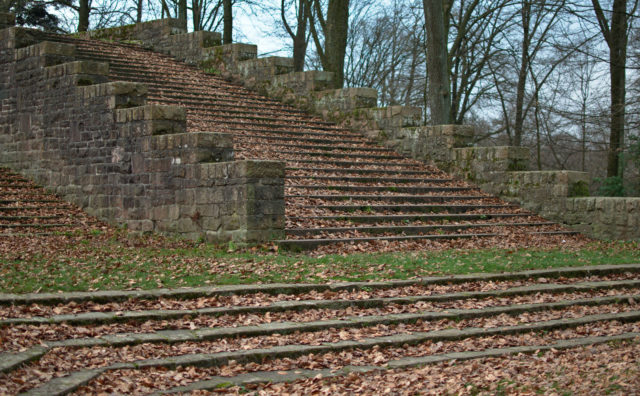
Located in Heidelberg partly as a counterpart to a cemetery of honour for the fallen of the First World War that was created on another peak above the city. Together with the Reichsfestspiele, one of its purposes was to present a picture of Nazi culture to foreign visitors. However, by the time it opened the Thing movement had already begun to fall out of favour.
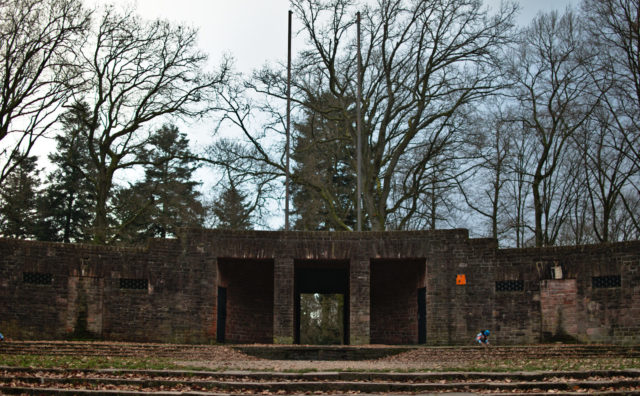
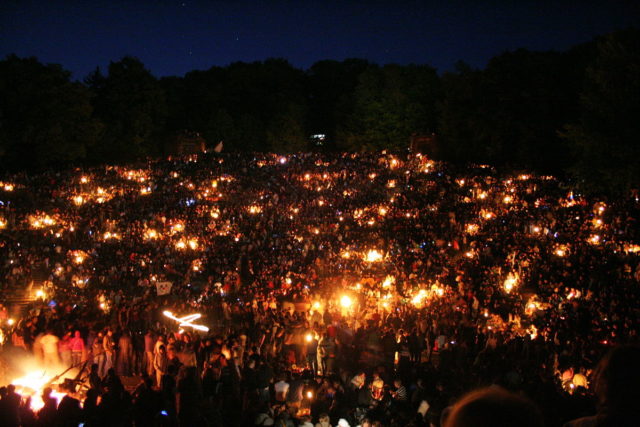
Hitler himself was not a big believer in the “Blut und Boden” aspect of Goebbels’ propaganda, and outdoor propaganda performances were not popular in the commonly cold and damp German weather. In the summer of 1936, the Mayor of Heidelberg announced its renaming from Thingstätte to Feierstätte (celebration site). Many of these sites have come to be used as venues for outdoor rock concerts and other musical presentations. Since the late 1980s, it has been unofficially used for annual celebrations of Walpurgis Night, which feature fire-dancers and jugglers and have attracted as many as 14,000 people.
